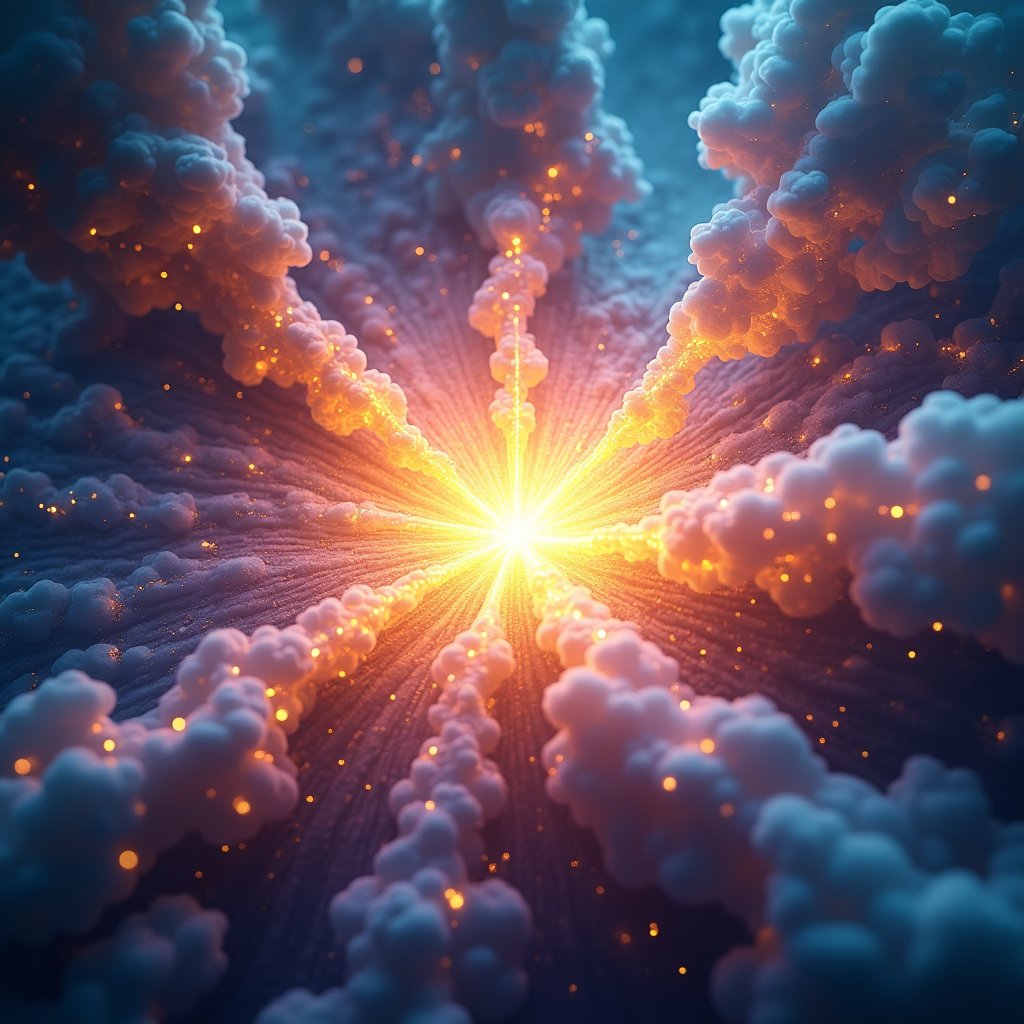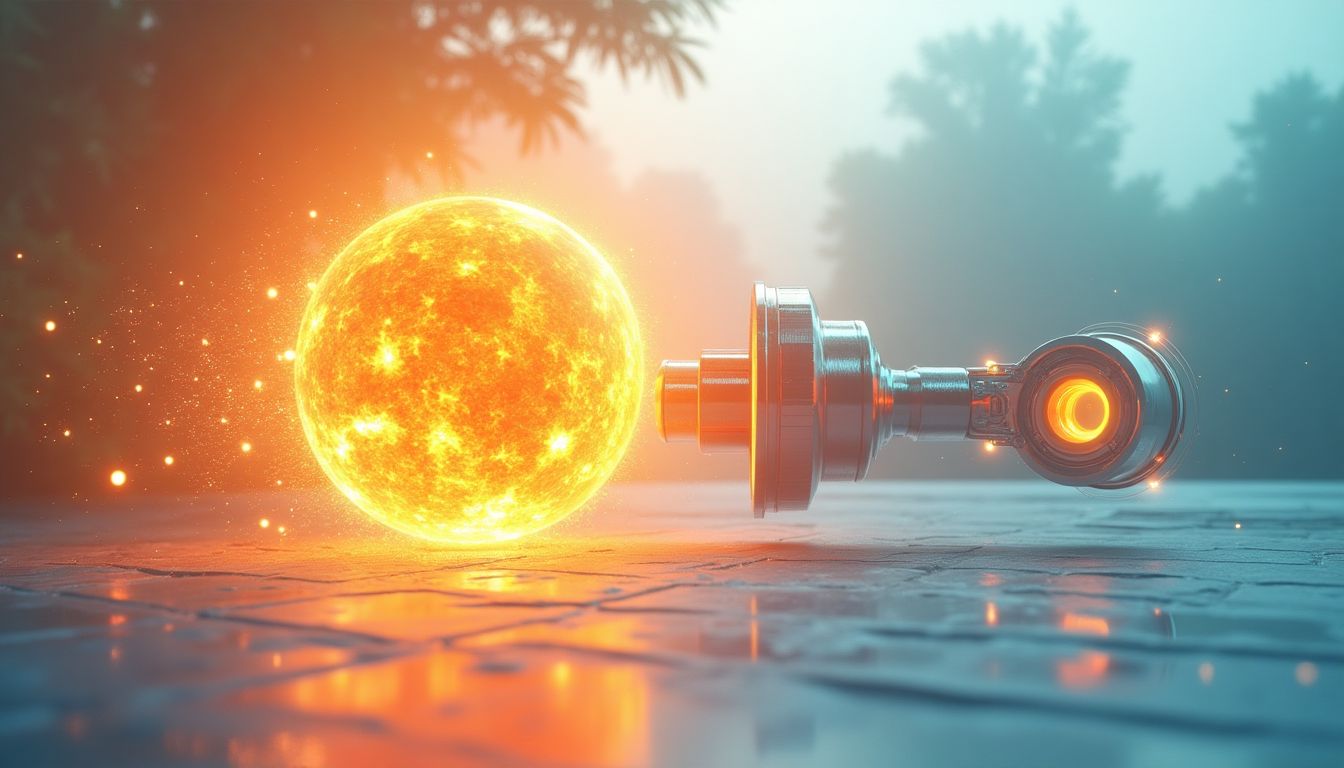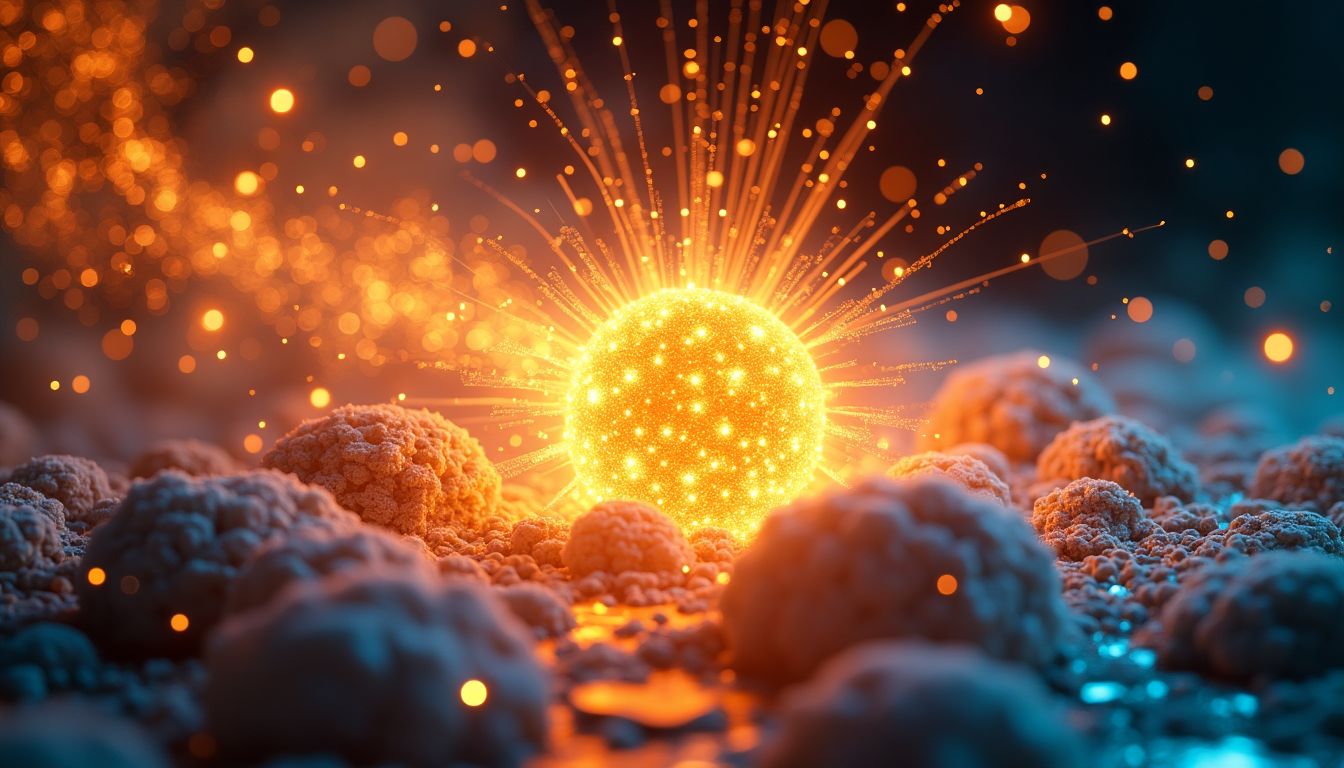What if the secret to solving Earth’s energy crisis has been burning in the sky for billions of years? Stars, those celestial powerhouses, have been churning out unimaginable amounts of energy through nuclear fusion. Now, humanity is on the brink of replicating that process here on Earth—and artificial intelligence is the key to making it happen. Welcome to the era of AI Starbuilders, where the dream of creating artificial suns is no longer science fiction but a tangible, albeit audacious, goal.
Fusion energy has long been the holy grail of sustainable power. Unlike fossil fuels, fusion produces no greenhouse gases. Unlike nuclear fission, it leaves behind no long-lived radioactive waste. The fuel? Deuterium, found in seawater, and tritium, which can be bred from lithium. The challenge? Recreating the conditions inside a star—temperatures exceeding 100 million degrees Celsius and pressures that make Earth’s core feel like a breezy summer day. For decades, scientists like Steven Cowley, a leading fusion physicist, have been working tirelessly to crack this puzzle. But progress has been slow, expensive, and fraught with setbacks.
Enter AI. Artificial intelligence, with its ability to process vast amounts of data and identify patterns invisible to the human eye, is revolutionizing fusion research. From optimizing reactor designs to predicting the chaotic behavior of plasma, AI is accelerating breakthroughs that once seemed decades away. Companies like Commonwealth Fusion Systems and Helion Energy are leveraging AI to push the boundaries of what’s possible. Even luminaries like Yann LeCun, a pioneer in machine learning, have expressed excitement about AI’s potential to solve some of humanity’s most pressing challenges—fusion energy being one of them.
But why should you care? Because this isn’t just about science. It’s about hope. It’s about a future where energy is abundant, clean, and accessible to all. It’s about proving that humanity, when armed with ingenuity and determination, can achieve the impossible. So, buckle up. We’re about to explore how AI is turning the dream of artificial suns into reality—and why this might be the most important story of our time.
1. The Science of Fusion: Replicating the Power of Stars
1.1 What is Fusion?
At its core, nuclear fusion is the process that powers stars, including our Sun. It occurs when two light atomic nuclei, like hydrogen, combine to form a heavier nucleus, releasing a tremendous amount of energy in the process. This is the opposite of nuclear fission, which splits heavy atoms like uranium to release energy. Fusion is cleaner, safer, and far more efficient. The most promising fusion reaction for energy production is the Deuterium-Tritium (D-T) reaction. Deuterium is abundant in seawater, and tritium can be bred from lithium, which is also widely available. Other potential reactions, like Deuterium-Deuterium (D-D) or Proton-Boron-11 (p-B11), are being explored but come with their own set of challenges.
1.2 The Challenges of Fusion on Earth
Recreating the conditions inside a star is no small feat. Fusion requires temperatures of over 100 million degrees Celsius—hotter than the Sun’s core—and extreme pressures to force atomic nuclei close enough to fuse. On Earth, we can’t rely on gravity to create these conditions, so we use magnetic fields or powerful lasers to contain and compress the fuel. The most common approach is magnetic confinement, using devices like tokamaks and stellarators. These doughnut-shaped machines use powerful magnets to contain superheated plasma, a state of matter where electrons are stripped from atoms, creating a swirling soup of charged particles.
But plasma is notoriously unstable. It’s like trying to hold a lightning bolt in a bottle. Even the slightest disturbance can cause the plasma to escape confinement, cooling down and halting the fusion reaction. This is one of the biggest hurdles in fusion research: achieving and maintaining plasma stability long enough to produce more energy than is consumed—a milestone known as energy breakeven.
1.3 Current Fusion Projects
Despite the challenges, significant progress has been made. The ITER project, a massive international collaboration, is building the world’s largest tokamak in southern France. ITER aims to demonstrate the feasibility of fusion power on a commercial scale, with the first plasma expected in 2025. However, ITER has faced delays and cost overruns, highlighting the complexity of fusion research.
Private companies are also stepping up. Commonwealth Fusion Systems, a spin-off from MIT, is developing compact tokamaks using high-temperature superconductors to achieve stronger magnetic fields with less energy. Helion Energy is pursuing a different approach, using pulsed magnetic fields to compress plasma and achieve fusion. Both companies are leveraging AI to accelerate their progress, from optimizing reactor designs to predicting plasma behavior.
Breakthroughs in materials science are also playing a crucial role. High-temperature superconductors, which can carry electric currents with zero resistance, are enabling more efficient magnetic confinement. Meanwhile, advances in laser technology are making inertial confinement fusion—where powerful lasers compress a fuel pellet to initiate fusion—more viable. The Lawrence Livermore National Laboratory recently achieved a significant milestone in this area, producing more energy from a fusion reaction than was absorbed by the fuel.
2. The Role of AI in Fusion Research
2.1 AI as a Problem-Solving Tool
Artificial intelligence is like the Swiss Army knife of modern science—it can tackle problems from multiple angles, often faster and more efficiently than humans. In fusion research, AI is being used to analyze massive amounts of data, identify patterns, and optimize experiments. Think of it as a super-smart lab assistant that never sleeps, never gets bored, and never complains about the coffee. For example, researchers at DeepMind have used AI to predict plasma behavior in tokamaks, a type of fusion reactor. This has significantly reduced the time needed for trial-and-error experiments, bringing us closer to the dream of sustainable fusion energy.
2.2 AI in Plasma Control and Stability
Plasma, the fourth state of matter, is like a rebellious teenager—it’s unpredictable and hard to control. In fusion reactors, maintaining plasma stability is crucial. If the plasma gets too hot or too unstable, the reaction fizzles out. Enter AI, the ultimate babysitter for plasma. Researchers at Princeton Plasma Physics Laboratory have developed AI systems that can predict and control plasma instabilities in real-time. These systems use machine learning algorithms to analyze data from sensors and adjust magnetic fields to keep the plasma in check. It’s like having a thermostat for a star, ensuring the perfect temperature for fusion to occur.
2.3 Optimizing Reactor Designs
Designing a fusion reactor is like building a spaceship—it requires precision, innovation, and a lot of trial and error. AI is revolutionizing this process by running simulations and generating designs that humans might never think of. For instance, ITER, the international fusion project, is using AI to optimize the design of its tokamak reactor. AI-powered generative design tools can create novel reactor configurations that are more efficient and cost-effective. It’s like having a futuristic architect who can dream up designs that push the boundaries of what’s possible.
3. AI-Driven Materials Science for Fusion
3.1 Developing Fusion-Ready Materials
Fusion reactors are like extreme sports enthusiasts—they thrive in conditions that would destroy most materials. Temperatures can reach millions of degrees, and the radiation levels are off the charts. To withstand these conditions, scientists need materials that are both tough and resilient. AI is helping to discover and test new materials, such as tungsten alloys and advanced ceramics, that can handle the heat. For example, researchers at MIT are using AI to screen thousands of material combinations, identifying the best candidates for fusion applications. It’s like a matchmaking service for materials, pairing the right ones with the extreme demands of fusion reactors.
3.2 High-Temperature Superconductors
Superconductors are the unsung heroes of fusion reactors. They generate the powerful magnetic fields needed to contain plasma, but they need to operate at extremely low temperatures. High-temperature superconductors, which can work at slightly warmer conditions, are a game-changer. AI is playing a key role in optimizing these materials, making them more efficient and cost-effective. Companies like Commonwealth Fusion Systems are leveraging AI to develop superconductors that can handle the intense conditions inside a fusion reactor. It’s like upgrading from a bicycle to a sports car—faster, stronger, and ready for the big leagues.
3.3 3D Printing and AI
3D printing is like the ultimate DIY tool—it can create complex shapes and structures with incredible precision. When combined with AI, it becomes a powerhouse for manufacturing fusion reactor components. AI can design parts that are optimized for strength, heat resistance, and efficiency, while 3D printers bring these designs to life. For example, researchers at Oak Ridge National Laboratory are using AI-driven 3D printing to create reactor components that are lighter, stronger, and more durable. It’s like having a factory of the future, where every part is custom-made for perfection.
4. AI in Energy Grid Integration
4.1 Managing Fusion Power Output
Imagine a world where fusion reactors produce more energy than we know what to do with. Sounds like a dream, right? But here’s the catch: even if we crack the fusion code, we still need to figure out how to integrate this massive energy output into our existing power grids. This is where AI steps in as the ultimate energy traffic controller.
Fusion reactors, unlike traditional power plants, generate energy in bursts. This unpredictability can wreak havoc on power grids designed for steady energy flows. AI can help by:
- Predicting energy demand: Using historical data and real-time inputs, AI can forecast when and where energy will be needed most.
- Balancing supply and demand: AI algorithms can adjust energy distribution in real-time, ensuring no blackouts or overloads.
- Optimizing grid efficiency: By analyzing grid performance, AI can identify bottlenecks and suggest improvements.
For example, DeepMind, a subsidiary of Alphabet, has already demonstrated how AI can optimize energy usage in data centers, reducing energy consumption by up to 40%. Applying similar techniques to fusion-powered grids could revolutionize how we manage energy on a global scale.
4.2 Energy Storage Solutions
Fusion energy is clean and abundant, but it’s not always consistent. To make fusion a reliable energy source, we need advanced storage solutions. Enter AI, the mastermind behind smarter energy storage systems.
Here’s how AI can help:
- Battery optimization: AI can monitor and manage battery health, extending lifespan and improving efficiency. Companies like Tesla are already using AI to enhance their Powerwall systems.
- Hydrogen storage: AI can optimize the production and storage of hydrogen, a promising fusion byproduct, for use in fuel cells.
- Grid-scale storage: AI can manage large-scale storage systems, ensuring energy is available when needed most.
For instance, Helion Energy is exploring how to pair fusion reactors with advanced storage solutions, creating a seamless energy ecosystem. With AI’s help, we can store excess fusion energy and release it during peak demand, ensuring a steady and reliable power supply.
4.3 Economic and Environmental Impact
Fusion energy isn’t just about powering our homes—it’s about transforming our economy and saving the planet. AI can help us model and maximize these benefits.
Consider the following:
- Economic modeling: AI can simulate the economic impact of fusion energy, from job creation to energy cost reductions. For example, a study by MIT predicts that fusion could reduce energy costs by up to 50% within decades.
- Environmental benefits: Fusion produces no greenhouse gases and minimal waste. AI can help track and optimize these environmental benefits, ensuring we maximize our impact on climate change.
- Global energy equity: AI can help distribute fusion energy equitably, ensuring even the most remote regions have access to clean, affordable power.
By combining fusion energy with AI, we can create a world where energy is not only abundant but also fair and sustainable. It’s a future worth striving for.
5. Ethical and Societal Implications of AI-Driven Fusion
5.1 Energy Equity and Access
Fusion energy has the potential to lift millions out of energy poverty, but only if we ensure it’s accessible to all. AI can play a crucial role in democratizing energy access.
Here’s how:
- Decentralized energy systems: AI can manage microgrids powered by small-scale fusion reactors, bringing energy to remote and underserved areas.
- Affordable energy: By optimizing fusion reactor designs and energy distribution, AI can help reduce costs, making clean energy affordable for everyone.
- Global collaboration: AI platforms can facilitate international cooperation, ensuring that fusion technology benefits all nations, not just the wealthy ones.
For example, ITER, the international fusion project, is already fostering collaboration among 35 countries. With AI’s help, we can ensure that fusion energy becomes a global public good, not a privilege for the few.
5.2 Safety and Security Concerns
Fusion energy is inherently safer than fission, but that doesn’t mean it’s risk-free. AI can help us address potential safety and security challenges.
Key areas where AI can make a difference:
- Reactor monitoring: AI can continuously monitor fusion reactors, detecting and addressing issues before they become problems.
- Cybersecurity: As fusion reactors become more connected, they’ll need robust cybersecurity measures. AI can help detect and prevent cyberattacks.
- Regulatory compliance: AI can ensure that fusion reactors meet all safety and environmental regulations, reducing the risk of accidents.
For instance, Commonwealth Fusion Systems is already using AI to enhance the safety of their reactors. By leveraging AI, we can ensure that fusion energy is not only powerful but also safe and secure.
5.3 The Future of Work in a Fusion-Powered World
The rise of fusion energy will transform industries and create new opportunities, but it will also disrupt traditional energy jobs. AI can help us navigate this transition.
Here’s how:
- Workforce retraining: AI-powered platforms can provide personalized training programs, helping workers transition to new roles in the fusion industry.
- Job creation: Fusion energy will create millions of new jobs, from reactor technicians to AI specialists. AI can help match workers with these opportunities.
- Economic resilience: By modeling the economic impact of fusion energy, AI can help communities prepare for and adapt to these changes.
For example, LinkedIn is already using AI to connect workers with new opportunities. By applying similar techniques to the fusion industry, we can ensure a smooth and equitable transition to a fusion-powered future.
6. AI Solutions: How Would AI Tackle This Issue?
6.1 Step-by-Step AI Approach to Fusion
Artificial intelligence is not just a tool; it’s a game-changer in the quest for fusion energy. Here’s how AI can systematically tackle the challenges of creating artificial suns:
- Data Collection and Simulation: AI can aggregate data from existing fusion experiments, such as those conducted at ITER or MIT’s Plasma Science and Fusion Center. By developing high-fidelity simulations of plasma behavior and reactor dynamics, AI can predict outcomes and identify patterns that humans might miss.
- Optimization of Reactor Designs: Generative AI can create innovative reactor configurations, pushing the boundaries of traditional tokamak and stellarator designs. Reinforcement learning can test and refine these designs in virtual environments, reducing the need for costly physical prototypes.
- Plasma Control and Stability: AI models can predict and mitigate plasma instabilities, a major hurdle in fusion research. Real-time AI control systems, like those developed by DeepMind, can adjust magnetic fields and other parameters to maintain plasma stability.
- Materials Discovery: AI can screen and test materials for fusion applications, accelerating the development of high-temperature superconductors and radiation-resistant alloys. For example, IBM’s quantum computing could simulate atomic interactions to identify promising candidates.
- Energy Grid Integration: AI algorithms can manage fusion power output, ensuring seamless integration into existing grids. By optimizing energy storage and distribution systems, AI can balance supply and demand in real-time.
- Global Collaboration: AI-driven platforms can facilitate data sharing and collaboration among international researchers. This could mirror the success of open-source projects like Linux, fostering a global community dedicated to fusion breakthroughs.
6.2 Action Schedule/Roadmap
Here’s a detailed roadmap for achieving fusion energy with AI, inspired by the meticulous planning of historical projects like the Manhattan Project but adapted for modern technology:
| Timeline | Action | Key Players |
|---|---|---|
| Day 1 | Assemble a global task force of fusion scientists, AI experts, and policymakers. Establish a centralized AI platform for data sharing. | United Nations, IAEA, DeepMind |
| Week 1 | Launch AI-driven simulations of plasma behavior and reactor designs. Begin training AI models on existing fusion data. | ITER, MIT Plasma Science and Fusion Center |
| Month 1 | Test AI-optimized reactor components in experimental facilities. Use 3D printing and AI to manufacture precision parts. | Commonwealth Fusion Systems, Helion Energy |
| Month 3 | Achieve a breakthrough in plasma stability using AI control systems. Implement real-time adjustments in experimental reactors. | Princeton Plasma Physics Laboratory, DeepMind |
| Year 1 | Develop and test new fusion-ready materials with AI assistance. Focus on high-temperature superconductors and radiation-resistant alloys. | IBM Quantum, MIT Materials Research Lab |
| Year 1.5 | Build and operate a prototype AI-optimized fusion reactor. Begin integrating fusion power into local energy grids. | ITER, Commonwealth Fusion Systems |
| Year 2 | Scale up fusion reactors globally. Use AI to optimize energy distribution and storage, ensuring a seamless transition to fusion power. | United Nations, IAEA, DeepMind |
6.3 Key Players and Institutions
This ambitious roadmap requires collaboration among the brightest minds and most innovative institutions. Key players include:
- Scientists: Steven Cowley (fusion expert), Yann LeCun (AI pioneer).
- Institutions: MIT, Princeton Plasma Physics Laboratory, DeepMind.
- Corporations: Google, Commonwealth Fusion Systems, Helion Energy.
The Dawn of a Fusion-Powered Future
Imagine a world where energy is as abundant as the air we breathe. A world where power outages are a distant memory, and the only byproduct of energy production is clean water. This is the promise of fusion energy, and with AI as our ally, it’s closer than ever before.
The journey to create artificial suns is not just a scientific endeavor; it’s a testament to human ingenuity and our unyielding desire to push boundaries. By harnessing the power of AI, we can overcome the technical challenges that have long hindered fusion research. From optimizing reactor designs to predicting plasma behavior, AI is the catalyst that will transform this dream into reality.
But this is more than just a technological breakthrough. It’s a chance to redefine our relationship with energy and the planet. Fusion energy offers a path to a sustainable future, free from the shackles of fossil fuels and the environmental devastation they bring. It’s a future where energy equity is not just a goal but a reality, where every corner of the globe has access to clean, limitless power.
As we stand on the brink of this new era, let us not forget the lessons of the past. The Manhattan Project showed us what humanity can achieve when we unite behind a common goal. Today, we have the tools, the knowledge, and the vision to achieve something even greater. The quest to create artificial suns is not just about power—it’s about hope, progress, and the promise of a brighter tomorrow.
So, what are we waiting for? The stars are within our reach. Let’s seize this opportunity and light up the future, one fusion reactor at a time.
Frequently Asked Questions (FAQ)
Q1: What is nuclear fusion?
Nuclear fusion is the process where two light atomic nuclei, like hydrogen, combine to form a heavier nucleus, releasing a massive amount of energy. This is the same process that powers stars like our Sun. Unlike nuclear fission, which splits atoms, fusion is cleaner and produces no long-lasting radioactive waste.
Q2: Why is fusion energy better than fission?
Fusion energy has several advantages over fission:
- Cleaner: Fusion produces no greenhouse gases or long-lived radioactive waste.
- Safer: Fusion reactions can’t run out of control like fission reactions, reducing the risk of accidents.
- Abundant Fuel: Fusion uses isotopes like deuterium (found in seawater) and tritium, which are virtually limitless.
For more on the differences, check out this ITER explanation.
Q3: How close are we to achieving fusion energy?
We’re closer than ever, but there are still challenges. Projects like ITER, the world’s largest fusion experiment, are making significant progress. Private companies like Commonwealth Fusion Systems and Helion Energy are also pushing the boundaries. Experts predict we could see commercial fusion reactors within 20-30 years, thanks to advancements in AI and materials science.
Q4: What role does AI play in fusion research?
AI is a game-changer for fusion research. Here’s how:
- Plasma Control: AI helps predict and stabilize plasma, the super-hot state of matter needed for fusion.
- Reactor Design: AI optimizes reactor designs, making them more efficient and cost-effective.
- Materials Discovery: AI accelerates the search for materials that can withstand extreme heat and radiation.
For example, DeepMind has used AI to control plasma in tokamaks, a type of fusion reactor.
Q5: Is fusion energy safe?
Yes, fusion energy is inherently safe. Fusion reactions require precise conditions to sustain, and if something goes wrong, the reaction simply stops. There’s no risk of a runaway reaction or meltdown like in fission reactors. Plus, fusion produces no long-lived radioactive waste, making it one of the cleanest energy sources possible.
Q6: What are the biggest challenges to achieving fusion energy?
The main challenges include:
- Plasma Containment: Keeping plasma stable at millions of degrees is incredibly difficult.
- Energy Breakeven: We need to produce more energy from fusion than we put in to sustain the reaction.
- Materials: Finding materials that can withstand extreme heat and radiation is a major hurdle.
AI is helping tackle these challenges by improving plasma control, optimizing reactor designs, and discovering new materials.
Q7: Who are the key players in fusion research?
Fusion research is a global effort involving:
- ITER: The International Thermonuclear Experimental Reactor is a collaboration of 35 countries.
- Private Companies: Companies like Commonwealth Fusion Systems and Helion Energy are leading the charge.
- Research Institutions: Places like Princeton University and MIT are at the forefront of fusion science.
Q8: How will fusion energy impact the environment?
Fusion energy has the potential to revolutionize our energy systems by providing a clean, virtually limitless power source. It could:
- Reduce Carbon Emissions: Replace fossil fuels and drastically cut greenhouse gas emissions.
- Minimize Waste: Produce no long-lived radioactive waste, unlike fission.
- Promote Sustainability: Use abundant fuels like deuterium from seawater, ensuring a sustainable energy future.
Q9: What’s the timeline for achieving fusion energy?
While exact timelines are hard to predict, here’s a rough roadmap:
| Timeframe | Milestone |
|---|---|
| 1-5 years | AI-driven breakthroughs in plasma control and reactor design. |
| 5-10 years | Construction and testing of prototype fusion reactors. |
| 10-20 years | First commercial fusion power plants come online. |
For more details, check out ITER’s fusion timeline.
Q10: How can I get involved in fusion research?
If you’re passionate about fusion, there are many ways to get involved:
- Education: Study physics, engineering, or computer science at institutions like MIT or Princeton.
- Careers: Look for opportunities at organizations like ITER or private companies like Commonwealth Fusion Systems.
- Advocacy: Support policies and funding for fusion research through organizations like the Fusion Industry Association.
Got more questions? Drop them in the comments below, and let’s keep the conversation going!
Wait! There's more...check out our gripping short story that continues the journey: The Artificial Sun
Disclaimer: This article may contain affiliate links. If you click on these links and make a purchase, we may receive a commission at no additional cost to you. Our recommendations and reviews are always independent and objective, aiming to provide you with the best information and resources.
Get Exclusive Stories, Photos, Art & Offers - Subscribe Today!





























Post Comment
You must be logged in to post a comment.